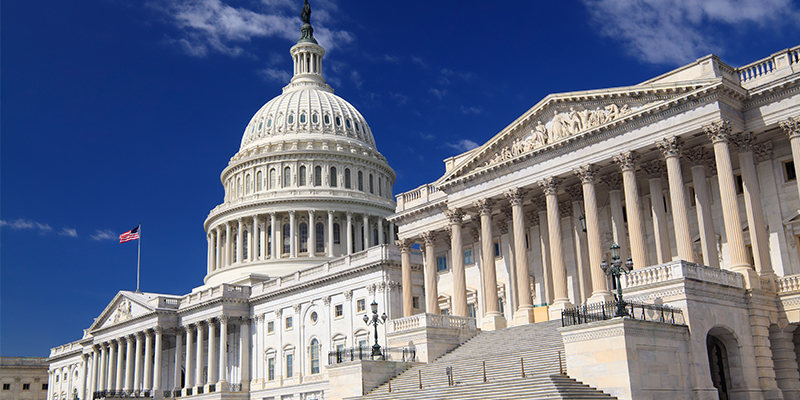By Toby Burke
State governments are required to maintain balanced budgets that ensure revenues equal expenditures. Any budgetary shortfall requires lawmakers to make calculated decisions to either reduce government services or generate additional revenue through tax and fee increases. There is growing uncertainty within the states of projected state revenues as President Donald Trump and Congress attempt to restructure federal support for state services and programs. The revenue concerns in the states are furthered by economic growth questions, inflation and the conclusion of the one-time pandemic relief funding from the federal government.
MultiState, a full-service state and local government relations company, issued a report by its Vice President and Counsel Bill Kramer, “State Budgets in the Shadow of Federal Uncertainty,” that indicates, on average, 34% of state spending revenue come from federal loans, grants and other expenditures. Basically, one-third of state spending comes from the federal government. The expected reductions in federal support will inevitably result in a state budgetary shortfall that will have to be addressed. The levels of these reductions could be significant.
The House of Representatives passed a reconciliation tax and spending bill with reductions to government programs, and the Senate is working on their own version. A few of these reductions in the House bill include $880 billion from various changes to Medicaid funding, including the level of federal matching funds to states, and $230 billion from the Supplemental Nutritional Assistance Program. The nearly $1 trillion reduction would significantly shift more of the financial burden for these jointly administered programs onto the states. The Urban-Brookings Tax Policy Center has done a state-by-state analysis of the House reductions on state budgets. The Senate’s Medicaid proposal would lower the health provider tax and would result in the states assuming more financial responsibility in administering the program. These federal reductions would also come at a time of slower state revenue growth, creating even greater budgetary challenges, according to the National Association of State Budget Officers.
The proposed federal reductions also come as the one-time infusion of federal pandemic relief funds to the states from the Coronavirus Aid, Relief, and Economic Security Act of 2020 and the American Rescue Plan Act of 2021 wind down. Although most states have already adjusted for this, the additional federal reductions will augment the challenge for states to close budget deficits and maintain balanced budgets.
The stability of the economy, along with potentially rising costs from inflation, in generating the necessary state revenue to make up for these federal cuts, will pose a significant challenge for state lawmakers. Once the Senate and House of Representatives resolve any differences and finalize the tax reconciliation bill currently being negotiated, and the president signs the bill, state lawmakers will have a clearer perspective of the budget outlook moving forward. Some states are already preparing contingency plans for the short term.
State revenues drive the policy debate within state capitals. Revenues that exceed expenditures allow states to implement policies to spur commercial development and economic growth. States operating with a deficit must either reduce expenditures or generate additional revenue, such as through additional taxes and fees on commercial real estate, to close any shortfalls. These states may also consider eliminating or lowering funds for economic development programs, such as historic preservation tax credit programs.
The reduction in federal funds that support state programs and services will cause budgetary challenges and deficits that will need to be addressed next year. Most states have already adopted budgets for this fiscal year, so many of the federal reductions will need to be addressed in future budgets. The engagement of NAIOP chapters and their members will provide lawmakers with needed perspectives from the industry on economic priorities, taxes and state investments in programs that further economic growth and opportunity. NAIOP Corporate is prepared to assist chapters in executing legislative strategies to influence budgetary outcomes within states.








